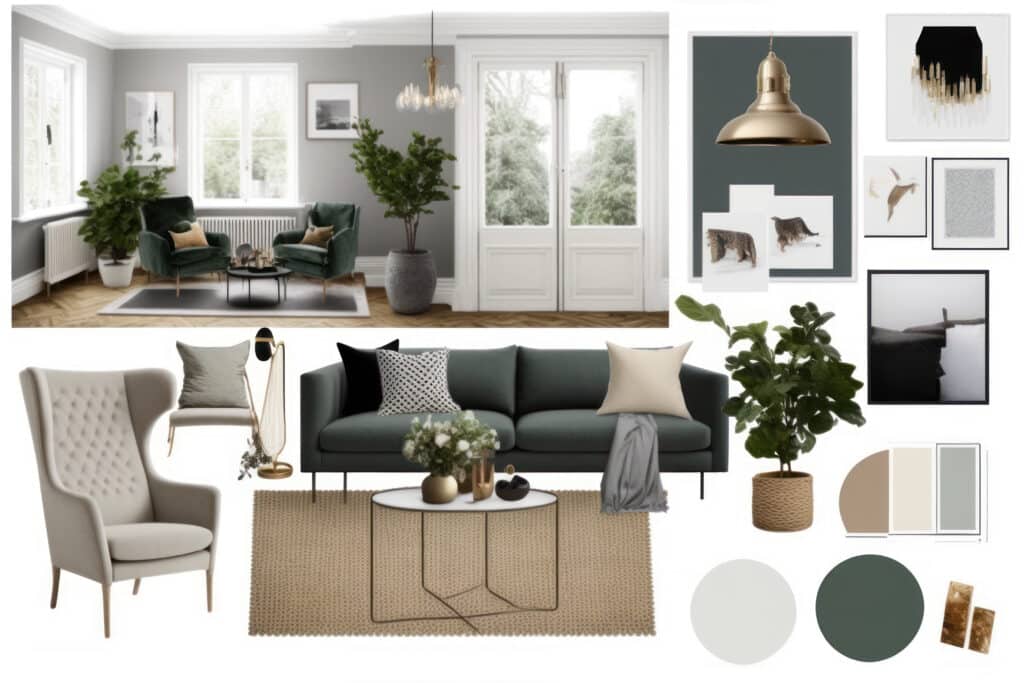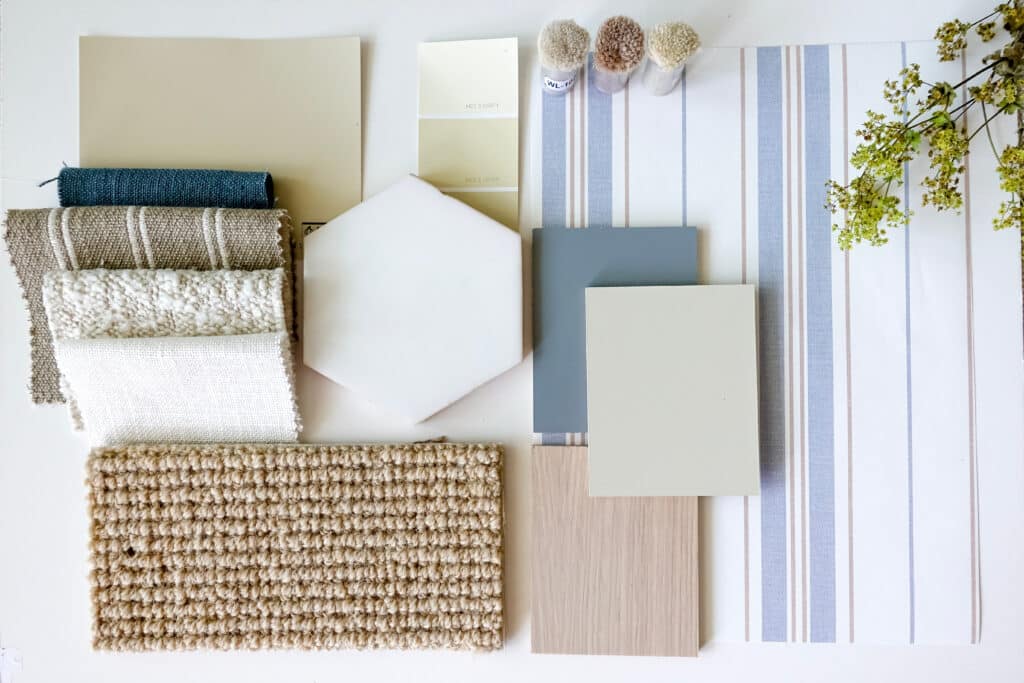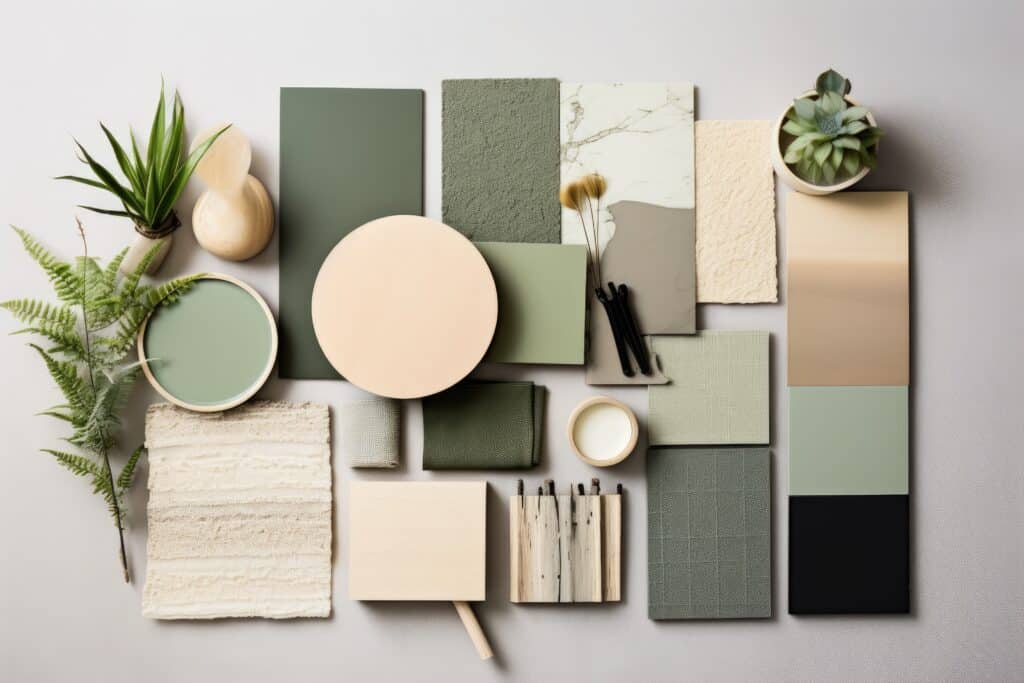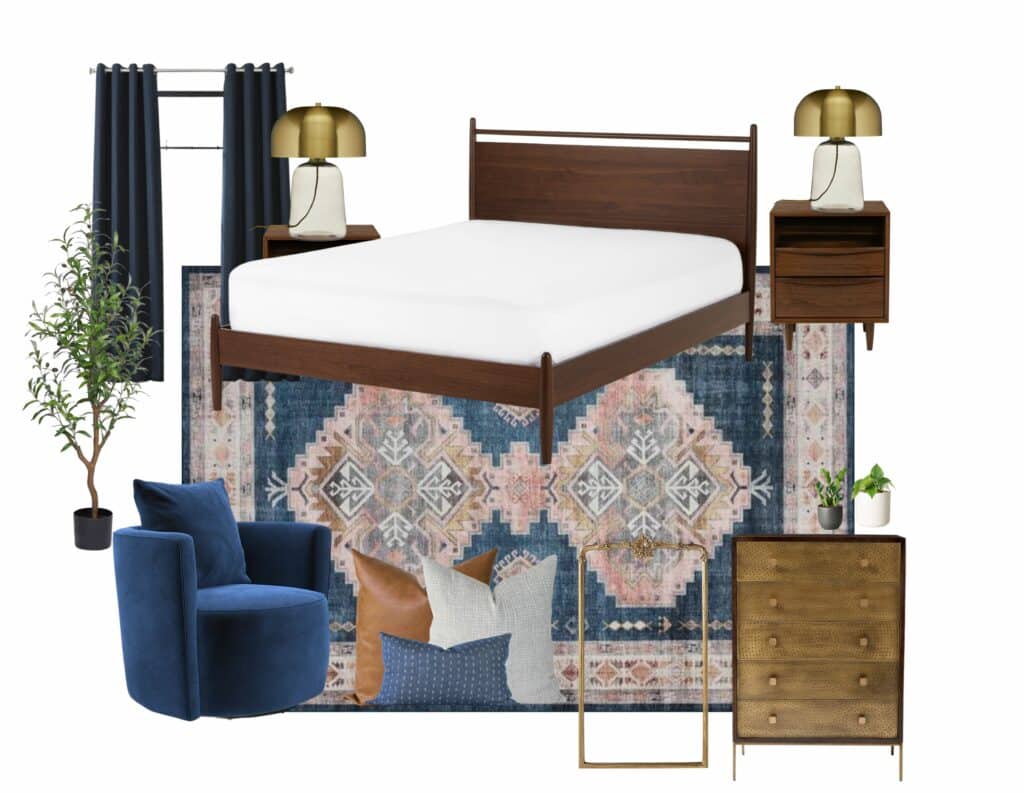
How to create a mood board for your interior design project
When it comes to transforming a house into a home, the importance of thoughtful interior design can’t be overstated. It’s not just about picking pretty items; it’s about creating a space that reflects your personality and suits your lifestyle. Whether you’re revamping a room or starting from scratch, a mood board is the secret weapon you need for your interior design project.
What’s a mood board?
A mood board is a collection of images, colours, and materials that acts as a visual guide for an upcoming project. It’s essentially a collage that’s used to visualise ideas, provide inspiration, and gauge how effectively a design scheme hangs together. Mood boards can be physical or digital, with each type having different benefits.

Why use a mood board?
A mood board is a fundamental tool for interior design projects. It can capture the essence of a design concept and guide you through a project from conception to completion. Through its mix of textures, colours, and patterns, a well-crafted mood board can breathe life into the space you’re envisioning. It’s a way of pinning down – sometimes literally – the ideas in your head.
If you’re collaborating with an interior designer or seeking input from loved ones, a mood board provides a snapshot of your ideas, which can be easier and more effective than attempting to articulate them verbally. It helps foster clear communication, ensuring everyone involved understands the design direction.
A mood board can also act as motivation and keep your mojo alive throughout your project. Whenever you hit a creative block or uncertainties arise, a glance at your mood board can reignite the spark. It’s a reminder of your ultimate goal and helps keep you on track.
So, what sort of mood board is right for you? Let’s take a closer look at each type…
Let’s get physical
A physical – or 3D – mood board is a collection of images cut from magazines, photos you’ve taken, and design samples from manufacturers, such as fabric or paint. Assembling these elements is a multi-sensory experience and can really help your understanding of how these pieces interact in a space. The feel of soft fabric, the sheen of metallic finishes, the smell of wood…they can all provide you with an experience that extends beyond a screen.

Speaking of screens, they can distort colours and make it difficult to understand textures, leading to discrepancies between what you see digitally and what you experience in reality. By having tangible samples, you gain a more accurate representation of how materials will look and feel in your space. This helps you make informed decisions and ensures a closer alignment between your vision and the final outcome.
Creating a physical mood board is easy – and lots of fun! Gather all your samples, along with glue, Sellotape, scissors, craft knife etc. Before you dive in, however, take a few moments to clarify your objectives. What is the focus of your board going to be? Will it be a colour, a theme or a specific object? Choose a base of either cork, foam, plywood or thick card and then begin to arrange your elements on the board.
Start by placing larger items on the board. Use the rule of thirds or create a central focal point to guide your layout. Layer smaller elements around these focal points to add depth and visual interest. Step back frequently to evaluate your mood board’s composition and adjust placements, colours, and textures as necessary. It’s a good idea to leave your board for a few days and return to it with fresh eyes.

Only when you are happy with everything should you begin to permanently fix the elements to your board – so avoid that superglue until you’re confident you don’t want any more changes! The final step is to take a photo of your completed board to show others or to use as a reference when you are shopping for your project.
Digital design
In the digital age creating a virtual mood board seems like the logical choice. A physical mood board might not be practical or perhaps you want to explore ideas before sourcing samples. Fortunately, there are several tools which easily let you create a digital mood board.
Perhaps the most popular tool is Pinterest. Think of it as a digital corkboard where you can save and organise any images that catch your eye. It’s free and incredibly easy to use. Want to design a cosy living room? Create a board named ‘Living Room Inspiration’ by hitting the ‘+’ button and selecting ‘Create board.’ Then you’re ready to start pinning!
Pinterest is a vast source of inspiration and saves you painstakingly cutting and gluing. It makes it easy for you to share your vision with others by inviting them to view and collaborate on your boards. You can also use the Pinterest app to view your mood board on the go.
A good alternative to Pinterest is Canva, a graphic design platform with a range of design tools, templates, and a user-friendly interface. When you start using Canva, you’ll have the option to ‘Create a Design’ and choose custom dimensions and background colours for your mood board. There’s an extensive library of images and design elements which you can drag and drop onto your canvas. You can also upload any images you have sourced elsewhere online.

If you have the Adobe Creative Suite, you can use Illustrator to create your mood board. As with Canva, you can generate a custom background and arrange the elements you have sourced. However, Illustrator’s powerful tools allow you to refine your mood board further. Use the ‘Pen Tool’ to create custom shapes or borders around images. Experiment with the ‘Colour Picker’ to match hues or create a colour palette that captures the desired ambiance. The ‘Text Tool’ comes in handy for adding labels or descriptions to your board.
Getting in the mood
A mood board is an incredibly useful tool for visualising your plans and safely experimenting with different ideas. As well as its practical benefits, however, creating a mood board is fantastic fun, whether it’s a physical or a digital version. It allows you to flex your creative muscles and let inspiration flow freely. There’s a mood board style to suit everyone so what are you waiting for?